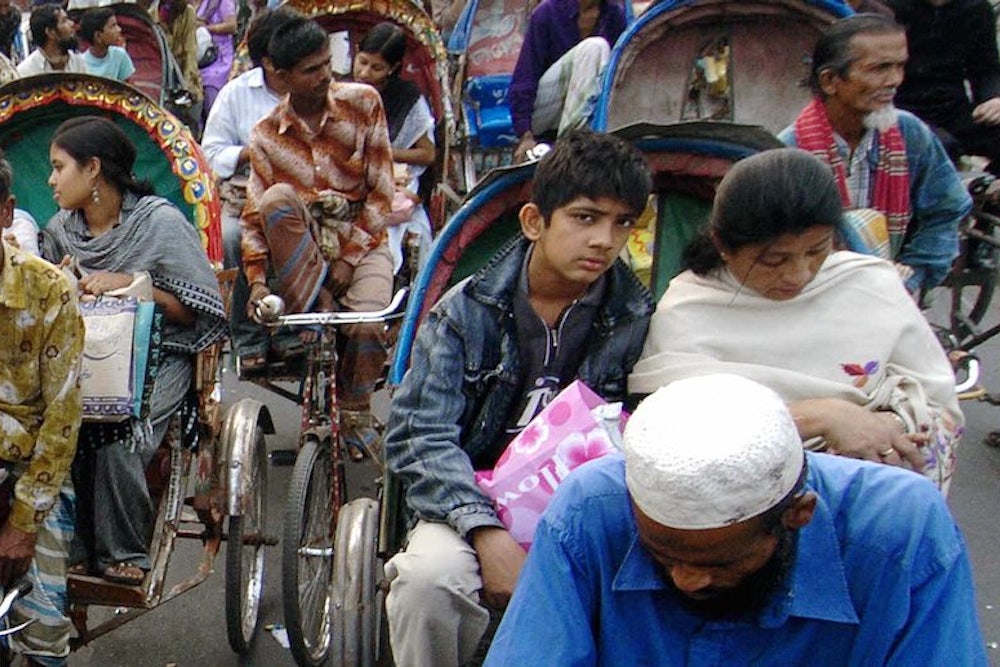Traffic congestion isn't as sexy as curing malaria, but it's one of the defining development problems of our time. In the latest issue of The New Republic, Michael Hobbes reports from Dhaka, Bangladesh, the world's fastest-growing city, where only 60 traffic lights serve 650 major intersections. The traffic jams, pictured below, cost the city $3.8 billion a year. —The New Republic editors

Karwan Bazaar, Dhaka's biggest wholesale market for fresh vegetable, fruits, and fish. The stripe cutting through the stalls is train tracks, which many pedestrians follow as they walk to work.

Most of Dhaka's buses are privately operated, and compete to take on as many passengers as possible.

Dhaka's intercity rail line. Dhaka has no over– or underpasses, so the traffic has to wait every time a train comes through.

A bridge on Hatir Jheel, in the center of the city. A series of bridges and overpasses were built around the lake to easy traffic congestion, and opened in 2013.

Banani lake, in the city's hip Gulshan district. One side (right) has many of Dhaka's largest companies and tallest buildings. The other (left) is Korail, one of its biggest slums.

Another bridge on Hatir Jheel. Though much of the traffic infrastructure here is reserved for cars, it's widely used by rickshaws, bicycles and pedestrians.

Most drivers rent rickshaw taxis, sometimes at punitive rates, from owners.

Traffic around Karwan Bazaar, around 2pm.
All photographs by Michael Hobbes.
